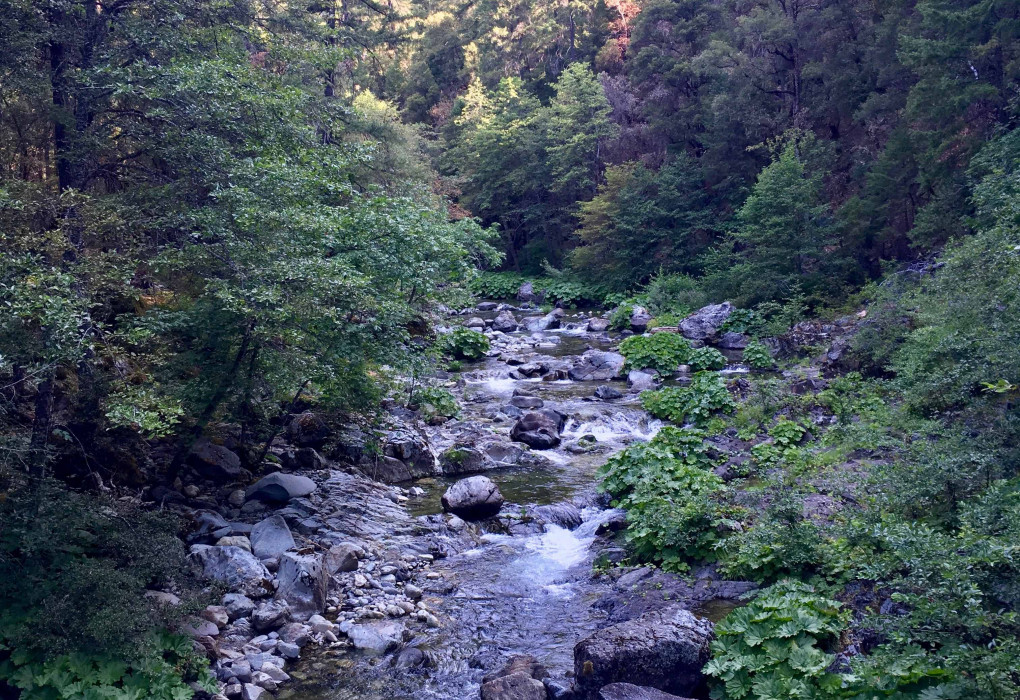Another perilous year for Spring Chinook in California's Salmon River
This week I joined a small team of volunteers and hiked several miles up one of California’s most remote Wild and Scenic Rivers, the North Fork of the Salmon River, which flows into the rugged Salmon River and is a tributary to the mighty Klamath.
Our mission was to snorkel each pool counting wild adult Spring Chinook salmon and summer steelhead.
My team went into the highest reach of the North Fork, where we swam a total of three river miles. It was bittersweet to see just two solitary adult Spring Chinook in deep pools nosed up to the bedrock outcroppings.
This summer the flows were low, below average for the end of July due to low snowpack, and the water temperatures were warm, mid-70s °F, well above the optimal temperatures for salmonids.
Collectively, we were part of a team of over 80 trained volunteer divers from various state and federal agencies, local tribes, non-governmental organizations, students from nearby Etna High School, and interested members of the public.
Our hosts were the Salmon River Restoration Council, a community based non-profit who since 1995, has annually collected important data to monitor the abundance and trends in the Salmon River and its tributaries for the Klamath’s last all wild population of Spring Chinook salmon and summer steelhead.
As recently as 2008 - 2013, the Salmon River saw over a thousand annually returning Spring Chinook. In 2017, the annual dives reported its second lowest year on record with 133 adult Spring Chinook and 68 adult summer steelhead. Preliminary reports for 2018 are just as dire as last year, with divers reporting 106 adult Spring Chinook and 87 summer steelhead (not including Wooley Creek, a major tributary that will be counted next week), making this likely to be the third lowest year on record.
Historically, Spring Chinook in the Klamath system were the most abundant salmonids, with collectively close to a million fish returning annually. Today, Spring Chinook in the Klamath basin are a fraction of that and face possible extinction. Despite the Salmon's especially low numbers, they are the Klamath basin's last viable all wild Spring Chinook population left.
The current management framework combines Fall Chinook and Spring Chinook into the same management unit, the Upper Klamath - Trinity River population, which fails to account for their unique life histories and is contributing to the decline of this important population. Recently, the Karuk Tribe and Salmon River Restoration Council filed for a petition to list the unique Spring Chinook under the federal Endangered Species Act. Previous efforts to list the Spring Chinook have failed although new research has furnished a better scientific understanding of these fish.
Recently published research from the University of California - Davis has identified a genetic difference between early run (spring) and late run (fall) Chinook salmon, which reveals an important distinction between the two salmon (See New Science: Fall Chinook don’t turn into Spring Chinook). This research combined with record low returns throughout the basin provide the foundation for the petition, and Native Fish Society is in full support of a listing to add much needed protections for this struggling wild salmon.
Earlier this year we filed supportive comments into the National Marine Fisheries Service with regards to the listing petition (available here). In their preliminary review, NMFS found “the petition presents substantial scientific information indicating the petition actions may be warranted” and a formal status review is currently underway to consider whether or not to list Spring Chinook as a separate population unit from their Fall counterparts.
Given the back-to-back record low years for Spring Chinook in the Salmon River, we can’t afford to stand by as we watch in real time a wild, native fish spiral downward. Join with us in supporting the Karuk Tribe and SRRC’s petition to list Spring Chinook and let's keep looking forward for decommissioning the lower four Klamath dams in 2021.
Make sure you are signed up to our monthly newsletter to stay up to date for opportunities to add your voice to future comment windows.
